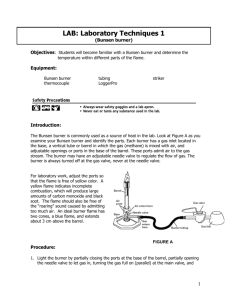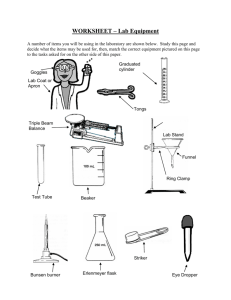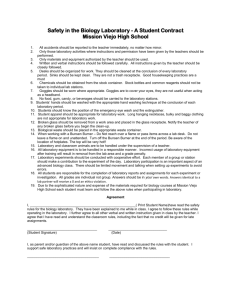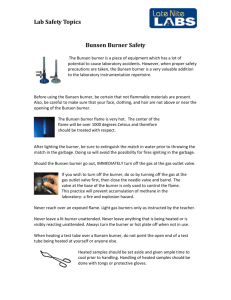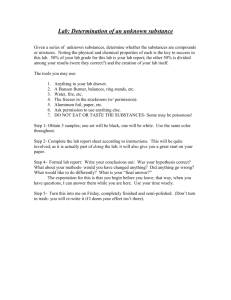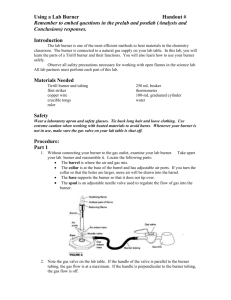basic bunsen burner - Mr-Paullers-wiki
advertisement
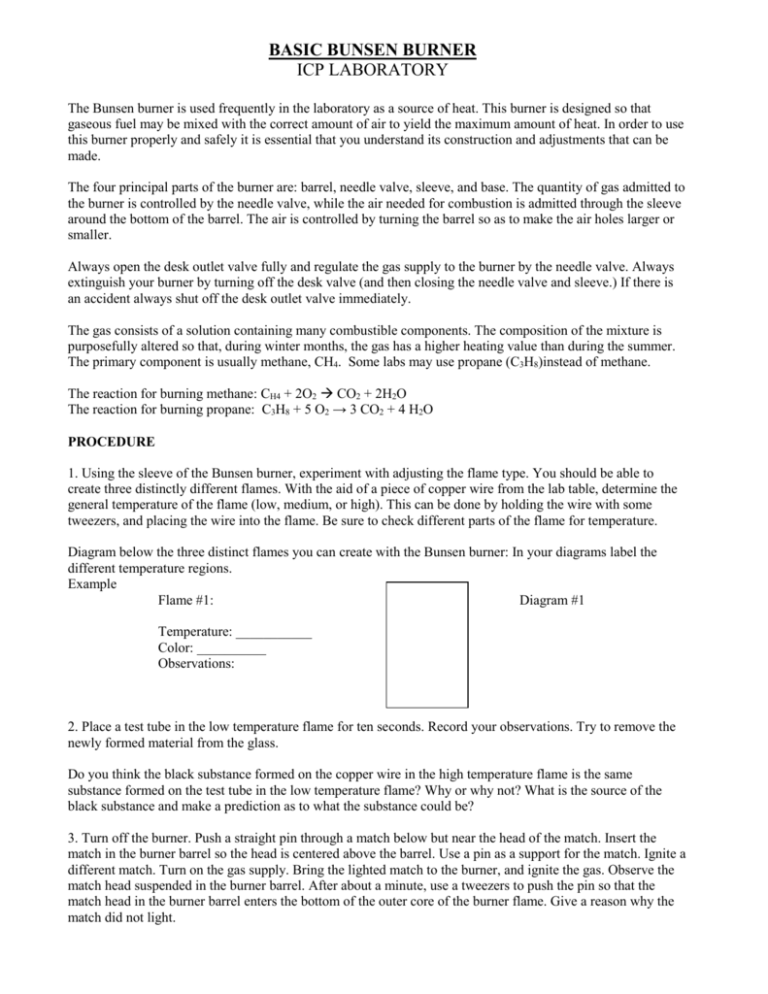
BASIC BUNSEN BURNER ICP LABORATORY The Bunsen burner is used frequently in the laboratory as a source of heat. This burner is designed so that gaseous fuel may be mixed with the correct amount of air to yield the maximum amount of heat. In order to use this burner properly and safely it is essential that you understand its construction and adjustments that can be made. The four principal parts of the burner are: barrel, needle valve, sleeve, and base. The quantity of gas admitted to the burner is controlled by the needle valve, while the air needed for combustion is admitted through the sleeve around the bottom of the barrel. The air is controlled by turning the barrel so as to make the air holes larger or smaller. Always open the desk outlet valve fully and regulate the gas supply to the burner by the needle valve. Always extinguish your burner by turning off the desk valve (and then closing the needle valve and sleeve.) If there is an accident always shut off the desk outlet valve immediately. The gas consists of a solution containing many combustible components. The composition of the mixture is purposefully altered so that, during winter months, the gas has a higher heating value than during the summer. The primary component is usually methane, CH4. Some labs may use propane (C3H8)instead of methane. The reaction for burning methane: CH4 + 2O2 CO2 + 2H2O The reaction for burning propane: C3H8 + 5 O2 → 3 CO2 + 4 H2O PROCEDURE 1. Using the sleeve of the Bunsen burner, experiment with adjusting the flame type. You should be able to create three distinctly different flames. With the aid of a piece of copper wire from the lab table, determine the general temperature of the flame (low, medium, or high). This can be done by holding the wire with some tweezers, and placing the wire into the flame. Be sure to check different parts of the flame for temperature. Diagram below the three distinct flames you can create with the Bunsen burner: In your diagrams label the different temperature regions. Example Flame #1: Diagram #1 Temperature: ___________ Color: __________ Observations: 2. Place a test tube in the low temperature flame for ten seconds. Record your observations. Try to remove the newly formed material from the glass. Do you think the black substance formed on the copper wire in the high temperature flame is the same substance formed on the test tube in the low temperature flame? Why or why not? What is the source of the black substance and make a prediction as to what the substance could be? 3. Turn off the burner. Push a straight pin through a match below but near the head of the match. Insert the match in the burner barrel so the head is centered above the barrel. Use a pin as a support for the match. Ignite a different match. Turn on the gas supply. Bring the lighted match to the burner, and ignite the gas. Observe the match head suspended in the burner barrel. After about a minute, use a tweezers to push the pin so that the match head in the burner barrel enters the bottom of the outer core of the burner flame. Give a reason why the match did not light.



